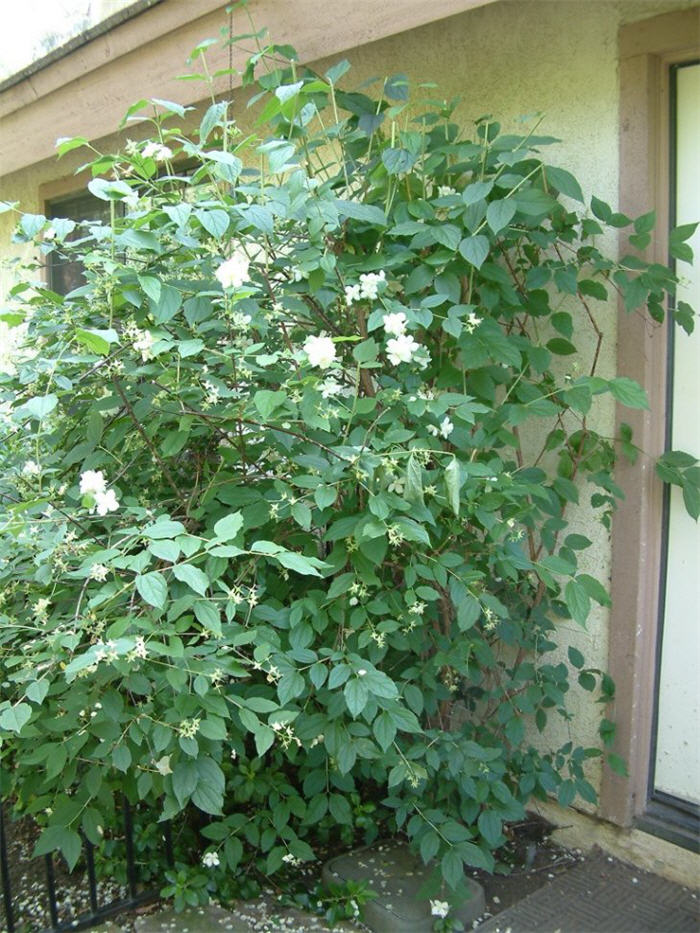| Botanical Name: Philadelphus lewisii | |
| Common Name: Western Mockorange |

-
Anatomy
-
Culture
-
Design
Plant Type
Shrub
Height Range
6-12'
Flower Color
White
Flower Season
Spring
Leaf Color
Green
Bark Color
Brown, Red
Fruit Color
n/a
Fruit Season
n/a
Sun
Full, Half
Water
Medium
Growth Rate
Moderate
Soil Type
Clay, Loam, Rocky
Soil Condition
Average, Rich, Well-drained, Dry
Soil pH
Neutral, Basic
Adverse Factors
Attracts Bees
Design Styles
English Cottage, Ranch
Accenting Features
Fragrance, Showy Flowers
Seasonal Interest
Spring
Location Uses
Background, Shrub Border, Foundation, Walls / Fences
Special Uses
Cut Flowers, Hedge, Screen, Small Spaces
Attracts Wildlife
Butterflies
Information by: Stephanie Duer
Photographer:
Photographer:
-
Description
-
Notes
Lewis Mockorange is an irregularly rounded to upright deciduous shrub, growing about 6 to 8 feet tall and 4 to 5 feet wide. Clusters of fragrant, white flowers appear in late May to early June. Leaves are a soft, dull green with a yellow fall color. Bark is reddish to orange-brown, with mature wood displaying exfoliating bark. A western native it was discovered by Meriwether Lewis and named in his honor. 'Cheyenne' is a selection from the Cheyenne Research Center in WY chosen for its flowering.
Grow in well drained, loamy soil in full sun to light, filtered shade. Adapted to gravelly and rocky soils. Adaptive to moderately high soil pH. If pruning is necessary, do so selectively, or perform renovative pruning after blooming (see Guides).